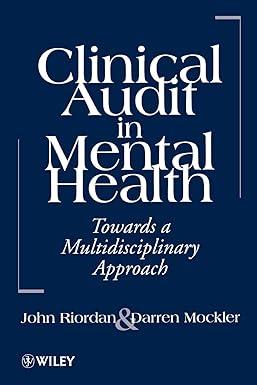
3. The Goodparts Company produces a component that consists of (3) individual parts, A, B, and C, that are purchased from the outside and cost $0.52, $0.39, and $0.18 per piece, respectively. Parts A and B are assembled at a Sub-Assembly operation, SA-1, at a rate of 140 completed pieces per hour. These completed components then move to Final Assembly. Part C undergoes a drilling operation (in-house) before moving to Final Assembly, where it will be assembled to the component coming from SA-1. There are a total of (6) drilling machines available, but only (3) are operating daily. Each drilling machine drills part C at a rate of 50 pieces per hour. The Final Assembly operation joins drilled Part C to the output of SA-1 at a rate of 160 finished components per hour. Presently components are being manufactured 8 hours per day, 5 days per week. Management understands that a second shift could be added if supported by demand. The cost of assembly labor is $0.45 per part for each of the assembly lines (Sub-Assembly PLUS Final Assembly). The labor cost to drill each part is $0.23 per part. The cost of electricity to drill each part is $0.03. Total overhead costs (supervision, etc.) are determined to be $1,710 per week, and depreciation for the equipment is determined to be $50 per week. a. Draw a simple process flow diagram and determine process capacity (number of components capable of being produced each WEEK) for each of the operations. (10 pts) HINT: Start with the purchased parts on the left side, with A and B feeding into the Sub-Assembly operation, then into Final Assembly. Part C starts on the left, feeds, into DRILLING, then into Final Assembly. 3. The Goodparts Company produces a component that consists of (3) individual parts, A, B, and C, that are purchased from the outside and cost $0.52, $0.39, and $0.18 per piece, respectively. Parts A and B are assembled at a Sub-Assembly operation, SA-1, at a rate of 140 completed pieces per hour. These completed components then move to Final Assembly. Part C undergoes a drilling operation (in-house) before moving to Final Assembly, where it will be assembled to the component coming from SA-1. There are a total of (6) drilling machines available, but only (3) are operating daily. Each drilling machine drills part C at a rate of 50 pieces per hour. The Final Assembly operation joins drilled Part C to the output of SA-1 at a rate of 160 finished components per hour. Presently components are being manufactured 8 hours per day, 5 days per week. Management understands that a second shift could be added if supported by demand. The cost of assembly labor is $0.45 per part for each of the assembly lines (Sub-Assembly PLUS Final Assembly). The labor cost to drill each part is $0.23 per part. The cost of electricity to drill each part is $0.03. Total overhead costs (supervision, etc.) are determined to be $1,710 per week, and depreciation for the equipment is determined to be $50 per week. a. Draw a simple process flow diagram and determine process capacity (number of components capable of being produced each WEEK) for each of the operations. (10 pts) HINT: Start with the purchased parts on the left side, with A and B feeding into the Sub-Assembly operation, then into Final Assembly. Part C starts on the left, feeds, into DRILLING, then into Final Assembly







